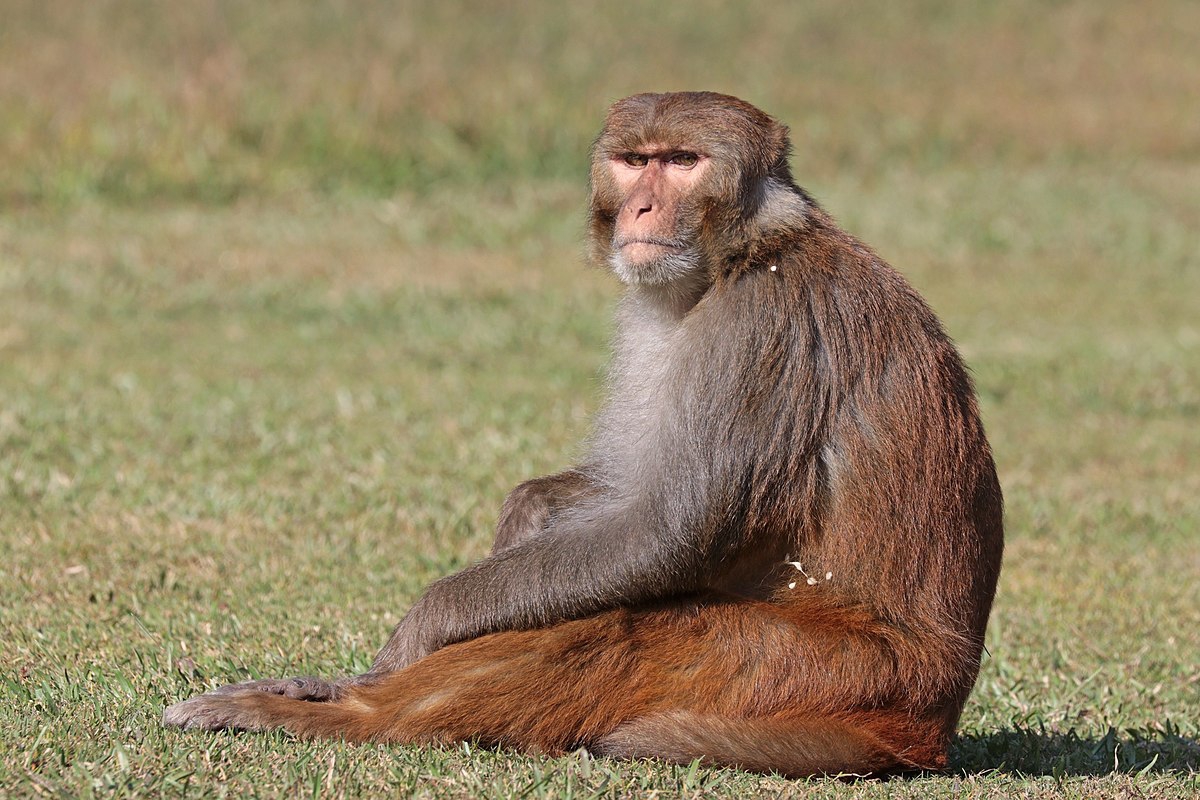| Citation |
Timmins, R.J., Richardson, M., Chhangani, A. & Yongcheng, L. 2008. Macaca mulatta. The IUCN Red List of Threatened Species 2008: e.T12554A3356486. http://dx.doi.org/10.2305/IUCN.UK.2008.RLTS.T12554A3356486.en. Downloaded on 06 August 2019. |
Description |
RANGE DESCRIPTION
The species as a whole is found throughout most of southern Asia, in eastern Afghanistan, Bangladesh, Bhutan, central and southern China (Anhui, Fujian, Guangdong, Guangxi, Guizhou, Hebei, Henan, Hubei, Hunan, Shaanxi, Sichuan, Tibet, and Yunnan, as well as the island of Hainan), northern and central India (in the states of Andhra Pradesh, Arunachal Pradesh, Assam, Bihar, Chattisgarh, Gujarat, Haryana, Himachal Pradesh, Jammu and Kashmir, Jharkand, Madhya Pradesh, Maharashtra, Manipur, Meghalaya, Mizoram, Nagaland, Orissa, Punjab, Rajasthan, Sikkim, Tripura, Uttaranchal, Uttar Pradesh and West Bengal), Lao PDR, Myanmar, Nepal, northern Pakistan, northern Thailand, and Viet Nam.
It occurs to the north of the Krishna River in central and eastern India and to the north of the lower Tapti River in western India, north into Afghanistan, Nepal, Sikkim, Bhutan, and northeast into China, where it extends to the Yangtze and north of its middle course to about 33°N, 110°E. It is absent north of the lower Yangtze, but there is an additional, possibly introduced population in northern China north of the lower Hwang He (Yellow River), formerly occurring as far as Beijing (Groves 2001).
There are introduced populations (mostly not mapped) in areas within this region as well as outside it, for instance south of the Krishna River in India; Kowloon and a few small islands near Hong Kong; and to various other locations worldwide, including parts of Florida, USA and on Cayo Santiago island near Puerto Rico (M. Richardson pers. comm.).
DESCRIPTION
This species is widely distributed in south, southeast and east Asia. Populations are sizable, but increasingly commensal with humans, resulting in some fragmentation of the distribution (Molur et al. 2003). It can be abundant in many places, including in cities. Hunting of this species in Lao PDR and Viet Nam has severely depressed populations in these countries although it still remains widespread. In Namdapha National Park, India, this species was found to have a group density of 0.44 groups/km2, with an average group size of 12.3 individuals (Chetry et al. 2003). The average group size in other parts of India is much higher (Siddiqui and Southwick 2004). Srivastava and Mohnot (2001) consider this species to be rare in the forests of north-eastern India.
THREATS
This species is generally unthreatened, though its original habitat is increasingly being lost to development. While M. mulatta exists easily around humans, the increasing level of cohabitation has been associated with waning levels of human tolerance for the animals (Molur et al. 2003). Confiscation for laboratory testing is a mostly localized threat, but it is considerable in certain areas (A. Kumar pers. comm.). Capture and release of laboratory and “problem monkeys” from rural and urban areas into natural forests is a major threat to wild macaques.
In Lao PDR and Viet Nam the major threat to the species is hunting, although loss of forest in river valleys has also likely impacted the species (R. Timmins pers. comm.). In Indochina hunting pressure is high, and thus tolerance to human disturbance is low.
Introduction, through release of confiscated M. fasicularis, is at least a localized threat in parts of the species Viet Namese range (R. Timmins pers. comm.). Tolerance of the species varies locally, from heavily hunted and persecuted, to worshipped and fed.
CONSERVATION ACTIONS
This species is listed on CITES Appendix II. It is also listed in Schedule III in the Bangladesh Wildlife (Preservation) (Amendment) Act, 1974 and in Schedule I, Part I in the Indian Wildlife (Protection) Act (amended up to 2002), on Category II of the Chinese Wildlife Protection Act (1989), and is protected with all other primates in the Nepalese National Parks and Wildlife Conservation Act, 1973. Protection status varies widely throughout the species range.
Rhesus macaques reside in a large number of protected areas throughout their range. |

